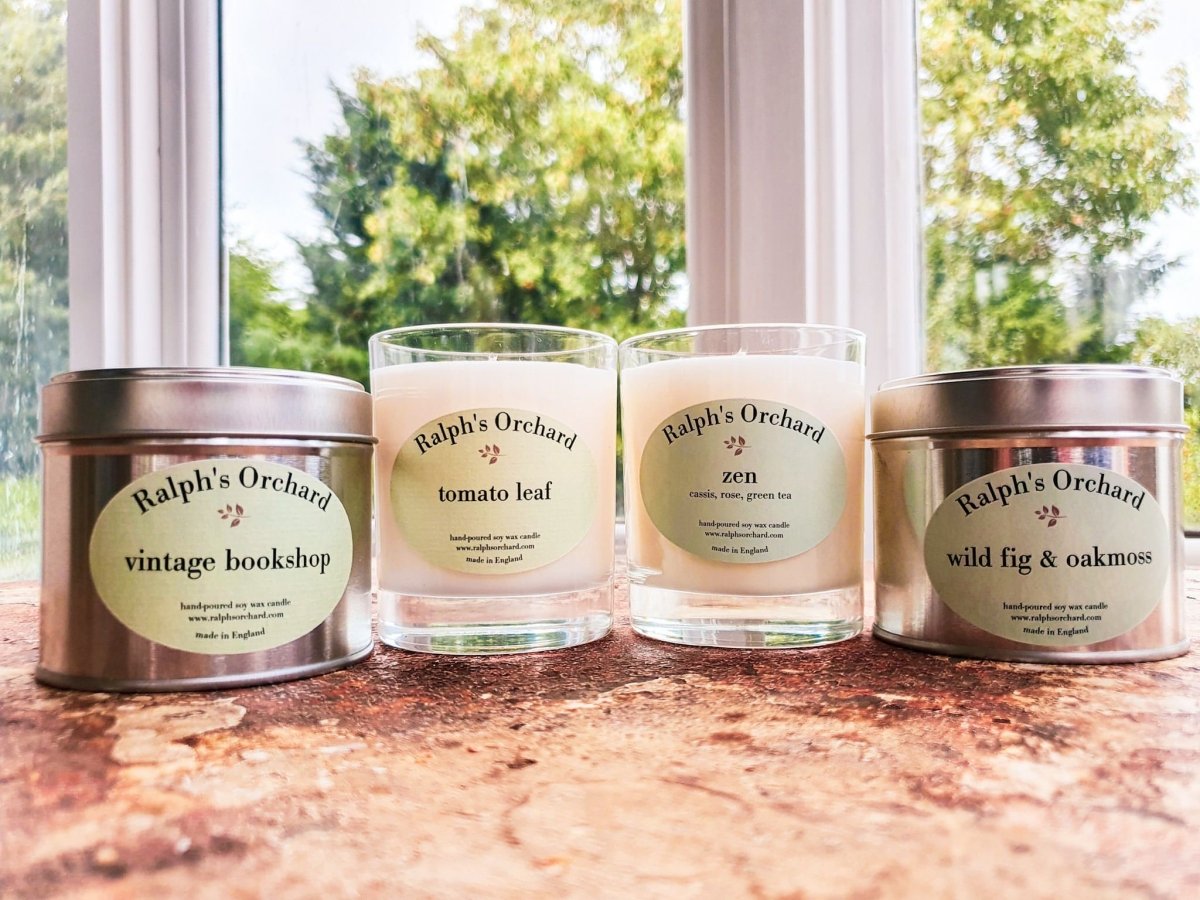
Healthier Candles for Your Home
Wax

There are so many different wax options to choose from nowadays, from the traditional paraffin wax, so vegetable waxes such as soy, coconut and rapeseed wax, to beeswax.
Paraffin is getting a bit of a bad rap these days. It is a by-product of petro-chemicals and does emit some nasty toxins into your air when you burn it. It's not great for the environment or for your lungs. It's also not great for your walls or furniture as it can leave unsightly soot stains. It is, however, a much more affordable option, as its production is easy and cheap.
Beeswax candles are not vegan (because bees), but they do burn very clean, even improving the air quality around them as they burn! It also burns much slower than paraffin, giving longer life to your candles. It has quite a strong scent of its own which means it does not always blend well for a scented candle, but this very much depends on each fragrance.
Vegetable waxes are hugely popular for a variety of reasons. They burn cleaner, and at lower temperatures meaning your candles last longer. The process by which they are made is also much more sustainable. Soy wax is often a by-product of the soy industry. This is a truly zero-waste alternative as the leftover husks from the production of the wax from soy beans are often fed to livestock. It is also biodegradable and will not take decades to break down.
Fragrance

Scented candles will use either a fragrance oil or essential oil. While the benefits of essential oil are well-known (I'll go into this a little further), not all fragrance oils are created equal and you will get the good, the bad and ugly.
Fragrance oils get their great scents from both natural and synthetic ingredients. Sounds like you'd want to run a mile, right? Not always. There are fantastic fragrance creators out there using only the highest-quality ingredients and ensuring that no harmful substances are found in the oils they produce, and that their ingredients are eco-friendly and cruelty-free. You do need to look out for these labels though. Fragrance oils are often less volatile than their natural counterparts and therefore safer to burn with a naked flame. There's an interesting article by the BBC for further reading on this subject.
Essential oils - the darling of fragrance and aromatherapy. It seems obvious that these are the healthiest choice for us and the planet and something we should always opt for. There can be down sides though. Think of all the land which needs to be razed to create lavender, jasmine or eucalyptus fields so we can grow these flowers and plants to then reap and crush into oils. It takes massive amounts of flower petals to produce even the smallest amounts of essential oil. Essential oils are also more volatile and can't be easily mixed to make them safe for burning. The safety labels on essential oils show that they still contain chemicals (naturally all earthly substances do) and still are required to carry the symbol for health warning and toxicity if released to the environment.
I'm not trying to give essential oils a bad rep here, but a balanced review is needed. I still love essential oils, and they are found in several of Ralph's Orchards' candles.
Wicks

This is where your candle can really be toxic to your environment. Traditionally, a lot of cotton wicks have contained nasty metals such as lead and zinc and are incredibly toxic in themselves. Luckily the use of lead is no longer permitted in the EU and UK. There are many wick options, the most popular is still cotton, but wood and hemp are alternatives which can easily be found. Cotton wicks still tend to burn better than the rest, giving longer life to your candles and creating a more even melt pool. Ralph's Orchard only use pure natural cotton wicks made from organic soy bean. They are eco-friendly, lead free, non toxic, paraffin- free, and contain no zinc or other metals.
Home fragrance is such a massive industry, and while quite heavily regulated, it can still be a minefield trying to find options that suit your needs and values. There is no one size fits all, but hopefully this article has been helpful!
Shop around Ralph's Orchard's eco-friendly, vegan and cruelty-free candles, or pop any questions you may have into the comments below :)
Enjoyed this article? Read more Notes from a Chandler or shop Ralph's Orchard collections.
